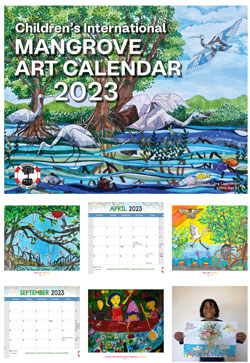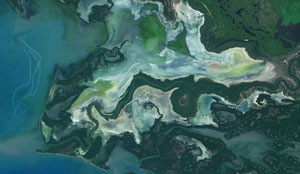MAP News Issue #568 – March 25, 2023
The MAP News | |
SPECIAL PODCAST Costing the EarthWhere do the prawns in your takeaway curry or pad thai come from? Peter Hadfield travels to South-East Asia to investigate the environmental impact of prawn farming. Listen Here FEATURE STORYWomen mobilize for their rights as artisanal fishers 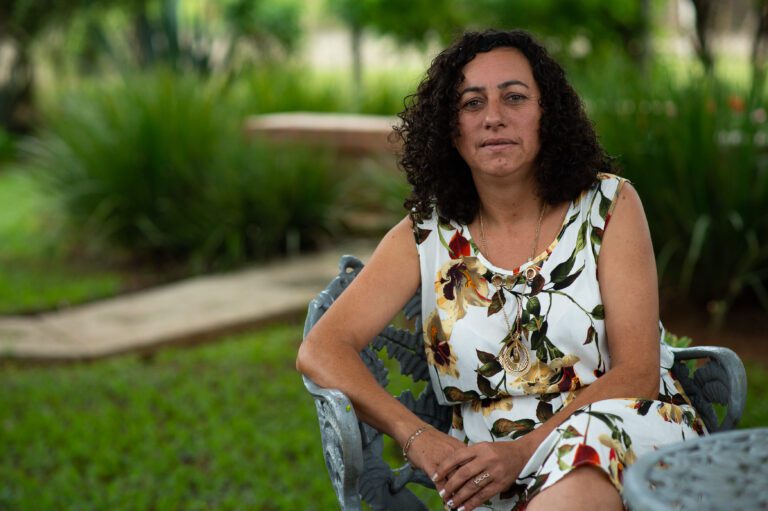 BRAZIL – Brazilian fisherwomen and shellfish gatherers are mobilizing to demand adequate representation in their sector, following decades of neglect. In January 2023, fisherwomen from four coastal regions in Brazil gathered with fishermen in the capital, Brasilia, to discuss critical changes needed in the fishing sector. The workshop, supported by Oceana, resulted in the “Letter of Brasilia” – a public call for decision-makers to update the country’s fisheries law – which was filed in Congress shortly after the meeting. The group also drafted a proposal that includes 20 new requirements to address the needs of artisanal fisherwomen throughout the country, , including: respecting the identity of fisherwomen and ensuring participation and rights of fisherwomen in decision-making spaces. Viviane Machado Alves, from Rio Grande do Sul, believes the inequality of past decades is nearing an end. She considers the craft of being an artisanal fisher more than just fishing itself. “We fish, cultivate, process, sell, and, above all, we are also guardians of the environment. We are not just fishing support. We want that visibility. The moment is now with this new federal government that announces that it will govern with the people and for the people. So, there’s no way we can’t be present in this new fishing legislation.” “We are forgotten by the government at all levels, municipal, state, and federal. Today, I see doors opening for us fisherwomen, because we are building, at the base, a bill for fishing with the chance to say what hurts and what hurts me as a fisherwoman,” says Jadeir Regina Nascimento, a fisherwoman from Maxaranguape in the northeast state of Rio Grande do Norte. BRAZIL – Brazilian fisherwomen and shellfish gatherers are mobilizing to demand adequate representation in their sector, following decades of neglect. In January 2023, fisherwomen from four coastal regions in Brazil gathered with fishermen in the capital, Brasilia, to discuss critical changes needed in the fishing sector. The workshop, supported by Oceana, resulted in the “Letter of Brasilia” – a public call for decision-makers to update the country’s fisheries law – which was filed in Congress shortly after the meeting. The group also drafted a proposal that includes 20 new requirements to address the needs of artisanal fisherwomen throughout the country, , including: respecting the identity of fisherwomen and ensuring participation and rights of fisherwomen in decision-making spaces. Viviane Machado Alves, from Rio Grande do Sul, believes the inequality of past decades is nearing an end. She considers the craft of being an artisanal fisher more than just fishing itself. “We fish, cultivate, process, sell, and, above all, we are also guardians of the environment. We are not just fishing support. We want that visibility. The moment is now with this new federal government that announces that it will govern with the people and for the people. So, there’s no way we can’t be present in this new fishing legislation.” “We are forgotten by the government at all levels, municipal, state, and federal. Today, I see doors opening for us fisherwomen, because we are building, at the base, a bill for fishing with the chance to say what hurts and what hurts me as a fisherwoman,” says Jadeir Regina Nascimento, a fisherwoman from Maxaranguape in the northeast state of Rio Grande do Norte.GLOBAL Changes in mangrove blue carbon under elevated atmospheric CO2 AFRICA Egypt establishes online database of wild plant species New mangrove planting model offers hope for successful restoration 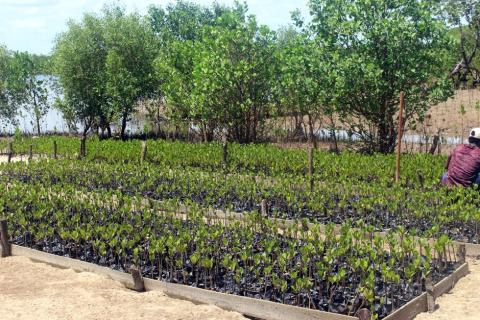 MADAGASCAR – Coastal communities recognize the value of mangroves but have struggled with overexploitation of the woody ecosystem. Rolland Randria, a fisherman and father of eight from a small village outside of Morondava and 80 others from his village, mostly women, have an association dedicated to restoring mangroves, but it hasn’t been easy. In exploited areas, now devoid of vegetation, sand dunes remain mobile and unstable, and mangrove restoration efforts are difficult. Planting mangrove seedlings directly in degraded areas has yielded an average survival rate of less than 10%. This dismal survival rate changed in 2021, when Randria’s association started working with the U.S. Department of Agriculture’s Forest Service and partners. With support from the U.S. Agency for International Development, the Forest Service assessed the tidal, soil and environmental conditions of proposed restoration sites and then adjusted mangrove propagation and outplanting methods to match ecosystem needs. They then worked with eight Menabe-based community associations like Randria’s to produce and plant 58,681 robust mangrove seedlings in degraded areas in 2022. Monitoring in 2023 show a 90% survival rate, nine times the success of previous efforts. “The success on the ground deserves to be copied in a large government project,” said Tsiry Niaina Randrenjarivelo, Regional Directorate of Fisheries and the Blue Economy in Menabe. Randrenjarivelo has participated in Forest Service mangrove workshops and is keen to replicate the methods and the success. A new government project, called SWIOFISH 2, plans to use the Forest Service approach to restore 1,000 hectares — about 2,500 acres — of mangroves in the Menabe region. MADAGASCAR – Coastal communities recognize the value of mangroves but have struggled with overexploitation of the woody ecosystem. Rolland Randria, a fisherman and father of eight from a small village outside of Morondava and 80 others from his village, mostly women, have an association dedicated to restoring mangroves, but it hasn’t been easy. In exploited areas, now devoid of vegetation, sand dunes remain mobile and unstable, and mangrove restoration efforts are difficult. Planting mangrove seedlings directly in degraded areas has yielded an average survival rate of less than 10%. This dismal survival rate changed in 2021, when Randria’s association started working with the U.S. Department of Agriculture’s Forest Service and partners. With support from the U.S. Agency for International Development, the Forest Service assessed the tidal, soil and environmental conditions of proposed restoration sites and then adjusted mangrove propagation and outplanting methods to match ecosystem needs. They then worked with eight Menabe-based community associations like Randria’s to produce and plant 58,681 robust mangrove seedlings in degraded areas in 2022. Monitoring in 2023 show a 90% survival rate, nine times the success of previous efforts. “The success on the ground deserves to be copied in a large government project,” said Tsiry Niaina Randrenjarivelo, Regional Directorate of Fisheries and the Blue Economy in Menabe. Randrenjarivelo has participated in Forest Service mangrove workshops and is keen to replicate the methods and the success. A new government project, called SWIOFISH 2, plans to use the Forest Service approach to restore 1,000 hectares — about 2,500 acres — of mangroves in the Menabe region.
AMERICASReforesting Mangrove Trees Could Prove Key to Storm Defense in Puerto Rico Florida Wildlife With Ali: Mangrove Tree Crabs  USA – If you’ve explored the vast Florida coastlines and any of the mangrove habitats in the Sunshine State, then you’ve been around mangrove tree crabs. This common and fascinating species can be found in tropical and subtropical parts of the America’s and has the scientific name Aratus pisonii. These small, dark crustaceans can be seen crawling atop mangrove trees during high tide and venturing onto the ground in low tide. Often, they are observed in large numbers traveling vertically up and around the branches. Mangrove tree crabs are uniquely flatter in surface structure than other crabs and their legs are spread out to the side to better climb the trees in which they live. Unlike other crabs, their eyes are wideset on either side of their carapace. This likely aids their vision when navigating the mangroves. Mangrove tree crabs are omnivores and feed mostly on detritus, algae, small invertebrates and animal matter. The most important part of their diet comes from the leaves of the mangrove trees in which they inhabit. Mangrove tree crabs reproduce year-round. Even with their small size, the female can carry over 30,000 eggs on her back, depending on the width of her carapace. It is also believed that their hatching cycles coincide with moon phases, though the study is not conclusive. Mangrove tree crabs are commonly preyed upon by shorebirds, fish and even other crabs that live in their mangrove environment. USA – If you’ve explored the vast Florida coastlines and any of the mangrove habitats in the Sunshine State, then you’ve been around mangrove tree crabs. This common and fascinating species can be found in tropical and subtropical parts of the America’s and has the scientific name Aratus pisonii. These small, dark crustaceans can be seen crawling atop mangrove trees during high tide and venturing onto the ground in low tide. Often, they are observed in large numbers traveling vertically up and around the branches. Mangrove tree crabs are uniquely flatter in surface structure than other crabs and their legs are spread out to the side to better climb the trees in which they live. Unlike other crabs, their eyes are wideset on either side of their carapace. This likely aids their vision when navigating the mangroves. Mangrove tree crabs are omnivores and feed mostly on detritus, algae, small invertebrates and animal matter. The most important part of their diet comes from the leaves of the mangrove trees in which they inhabit. Mangrove tree crabs reproduce year-round. Even with their small size, the female can carry over 30,000 eggs on her back, depending on the width of her carapace. It is also believed that their hatching cycles coincide with moon phases, though the study is not conclusive. Mangrove tree crabs are commonly preyed upon by shorebirds, fish and even other crabs that live in their mangrove environment.
Volunteers remove 82 kilos of garbage from Mahahual mangrove ASIA Indonesia’s mangrove restoration will run out of land well short of target, study warns  INDONESIA – In 2020, the Indonesian government set a goal of restoring 600,000 hectares, or nearly 1.5 million acres, of mangrove ecosystems by 2024. Progress toward that goal has been slow: Indonesia’s Peatland and Mangrove Restoration Agency (BRGM) reported it had restored 34,911 hectares (86,267 acres) in 2021, more than its stated 30,000-hectare (74,000-acre) target for the year, but still a small percentage of the larger goal. Now, the 600,000-hectare target faces another challenge. A recently published countrywide map of suitable areas for mangrove restoration shows that just 193,367 hectares (477,820 acres) of mangroves, 30% of the target area, is actually suitable for restoration. The idea behind this new study, led by Sigit Sasmito of the National University of Singapore and Mohammad Basyuni of the University of North Sumatra and published in the journal Nature Ecology & Evolution, was simple. “We were triggered by the fact that there was a big plan to restore 600,000 hectares of mangrove in Indonesia, so we were curious about where to find the land,” said co-author Daniel Murdiyarso, principal scientist at CIFOR-ICRAF. Mangrove restoration is much more complex than simply planting seedlings; whether those seedlings will grow depends on the substrate, hydrology and history of the area they’ve been planted in, and whether they will persist in the long term is linked to the land tenure status of where they’re growing. INDONESIA – In 2020, the Indonesian government set a goal of restoring 600,000 hectares, or nearly 1.5 million acres, of mangrove ecosystems by 2024. Progress toward that goal has been slow: Indonesia’s Peatland and Mangrove Restoration Agency (BRGM) reported it had restored 34,911 hectares (86,267 acres) in 2021, more than its stated 30,000-hectare (74,000-acre) target for the year, but still a small percentage of the larger goal. Now, the 600,000-hectare target faces another challenge. A recently published countrywide map of suitable areas for mangrove restoration shows that just 193,367 hectares (477,820 acres) of mangroves, 30% of the target area, is actually suitable for restoration. The idea behind this new study, led by Sigit Sasmito of the National University of Singapore and Mohammad Basyuni of the University of North Sumatra and published in the journal Nature Ecology & Evolution, was simple. “We were triggered by the fact that there was a big plan to restore 600,000 hectares of mangrove in Indonesia, so we were curious about where to find the land,” said co-author Daniel Murdiyarso, principal scientist at CIFOR-ICRAF. Mangrove restoration is much more complex than simply planting seedlings; whether those seedlings will grow depends on the substrate, hydrology and history of the area they’ve been planted in, and whether they will persist in the long term is linked to the land tenure status of where they’re growing.How MISHTI plans to conserve mangrove  INDIA – As oxygen generators, carbon sinks and home to diverse wildlife and rich biodiversity, the importance of forests and the need for their expansion cannot be emphasised enough. Under Prime Minister (PM) Narendra Modi, India is on course to devise a unique biodiversity conservation model through a holistic approach. India is displaying its commitment to the conservation and restoration of natural ecosystems and has firm commitments towards the conservation and management of mangroves. As part of this effort, in Budget 2023-24, the Modi government, building on India’s success in afforestation, rolled out the Mangrove Initiative for Shoreline Habitats and Tangible Incomes (MISHTI). Under this scheme, mangrove plantations along the coastline and on salt pans will be taken up. The government is emphasising mangroves because this tidal forest serves as a nursery for several organisms. It also acts as a bulwark against coastal erosion, sequestering carbon and providing livelihoods to millions of people, besides harbouring an array of faunal elements in its habitat. India recently joined the Mangrove Alliance for Climate (MAC), a joint initiative of Indonesia and the United Arab Emirates. The world has much to gain from India’s experience in mangrove conservation because we have shown expertise in the area for nearly five decades. India has restored different types of mangrove ecosystems on the east and west coasts and learnt some valuable lessons. INDIA – As oxygen generators, carbon sinks and home to diverse wildlife and rich biodiversity, the importance of forests and the need for their expansion cannot be emphasised enough. Under Prime Minister (PM) Narendra Modi, India is on course to devise a unique biodiversity conservation model through a holistic approach. India is displaying its commitment to the conservation and restoration of natural ecosystems and has firm commitments towards the conservation and management of mangroves. As part of this effort, in Budget 2023-24, the Modi government, building on India’s success in afforestation, rolled out the Mangrove Initiative for Shoreline Habitats and Tangible Incomes (MISHTI). Under this scheme, mangrove plantations along the coastline and on salt pans will be taken up. The government is emphasising mangroves because this tidal forest serves as a nursery for several organisms. It also acts as a bulwark against coastal erosion, sequestering carbon and providing livelihoods to millions of people, besides harbouring an array of faunal elements in its habitat. India recently joined the Mangrove Alliance for Climate (MAC), a joint initiative of Indonesia and the United Arab Emirates. The world has much to gain from India’s experience in mangrove conservation because we have shown expertise in the area for nearly five decades. India has restored different types of mangrove ecosystems on the east and west coasts and learnt some valuable lessons.
*Articles in this newsletter may mention practices being used and/or show exagerated results being claimed without proof. Stories are presented here in effort to show mangrove related activity around the world and do not necessarily reflect Mangrove Action Project’s views or mangrove restoration best-practices. NOTICEChildrens Art Calendars 2023 ORDER YOURS HERE
ACTION ALERTSDON’T LET THE PACIFIC ISLANDS SINK!Climate change is drowning the Pacific Islands. Join the urgent call from the Prime Minister of Tuvalu and sign with your email address: CLICK HERE Do not sacrifice Congo’s rainforests to the oil industry! TAKE ACTION TAKE MAP SURVEY Please see the survey questionnaire we at MAP put together to discover where the shrimp industry is still having major adverse effects on mangroves and local communities. Stop the Dredging – 6.7 million cubic meters of sand from the Addu atoll basin will destroy nature, biodiversity and the natural defences and resilience of this UNESCO Biosphere Reserve. SIGN THE PETITION Keep fossil fuels out of Bangladesh for the health and wellbeing of the local communities, the beautiful regional beaches and forests, the Bangladeshi economy, and our shared climate. SIGN PETITION Stop this total madness Stop the biggest heated oil pipeline in the world — right through the heart of Africa! Like this newsletter? Pease consider donating to MAP to keep it going. Giving could never be easier MAP Website en Español 13 Year old Linda Li “Mangrove Adventure” from Kid Dream Art School
Video: Mangroves for the Future WANT TO GET INVOLVED?
Interested in connecting or working with MAP? Check out our opportunities here MANGROVE ISSUES Want to learn more about mangroves? What is CBEMR? Download MAP’s 2 page CBEMR Information Sheet containing links to all MAP’s CBEMR resources – CLICK HERE View MAP’s uploaded Videos at Question Your Shrimp Consumer/Markets Campaign! Mangroves: Guidebook to Malaysia – Click Here SHARE MAP’S VISION Our short documentary, Reducing the Risk of Disaster through Nature-Based Solutions : Mangroves NASA Study Maps the Roots of Global Mangrove Loss Marvellous Mangroves Curriculum The Marvellous Mangroves Curriculum begins with a simple philosophy – getting future generations to not only learn about, but understand the importance of mangrove forests. VISIT Marvellous Mangroves Curriculum in Bangladesh – WATCH VIDEO
Like this newsletter? Pease consider donating to MAP to keep it going. Giving could never be easier *Articles in this newsletter may mention practices being used and/or show exagerated results being claimed without proof. Stories are presented here in effort to show mangrove related activity around the world and do not necessarily reflect Mangrove Action Project’s views or mangrove restoration best-practices. | |
Mangrove Action Project Click here to view past newsletters
| |

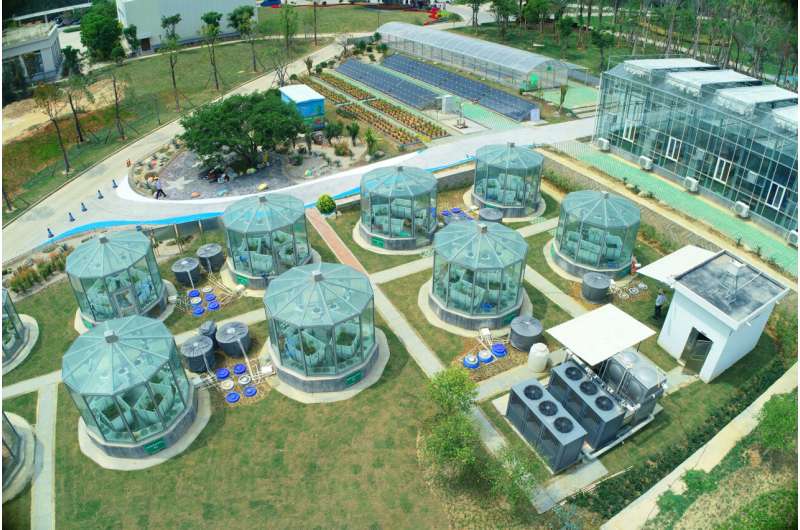
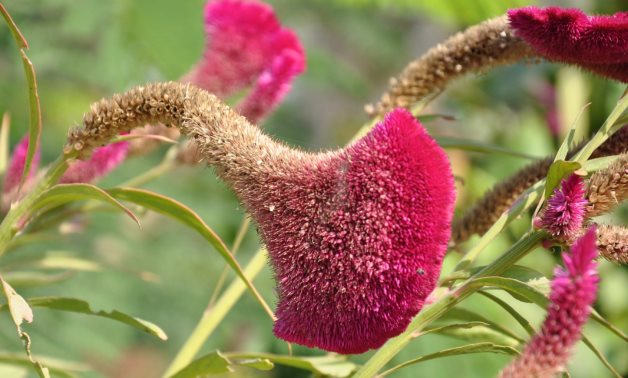 EGYPT – The Ministry of Environment established a database of wild plant species in Egypt, on its official website. Egypt occupies the northeastern corner of the African continent, where four regions of biological geography meet, which are: the Iranian and the Turanian, the Mediterranean region, the desert Sindani, and the African tropical. What increases the uniqueness of this site is that it is divided into two parts by the longest river in the world, the Nile River. However, as a result of the extreme variation in its ecological ranges, it is home to a diversity of wild habitats, plant and animal life, which is characterized by an extreme diversity in its composition, despite the small number of species of living organisms and the lack of endemic species. It is indisputable that coral reefs and mangroves are two of the mechanisms of biodiversity in the world, in addition to that the fauna and flora of the Red Sea are, to a large extent, a modified version of the fauna and flora of the Indian and Pacific oceans, although they include a relatively small number of endemic species.
EGYPT – The Ministry of Environment established a database of wild plant species in Egypt, on its official website. Egypt occupies the northeastern corner of the African continent, where four regions of biological geography meet, which are: the Iranian and the Turanian, the Mediterranean region, the desert Sindani, and the African tropical. What increases the uniqueness of this site is that it is divided into two parts by the longest river in the world, the Nile River. However, as a result of the extreme variation in its ecological ranges, it is home to a diversity of wild habitats, plant and animal life, which is characterized by an extreme diversity in its composition, despite the small number of species of living organisms and the lack of endemic species. It is indisputable that coral reefs and mangroves are two of the mechanisms of biodiversity in the world, in addition to that the fauna and flora of the Red Sea are, to a large extent, a modified version of the fauna and flora of the Indian and Pacific oceans, although they include a relatively small number of endemic species. PUERTO RICO – The sun shone brightly on a recent Saturday morning in Puerto Rico as a group of three dozen people grabbed mangrove roots from a bucket provided by organizers. Some of the planters were clad in waders while others wore flip-flops and board shorts, but all came to the beach town of Isabela for the same purpose: to restore the mangrove forests to their former glory in hopes of preventing the beach from moving inland. “The quicker we seed, the faster the forest will grow,” Andreina Alexatos, green infrastructure coordinator for the San Juan Bay Estuary Program, told Latino Rebels, adding about 95 percent of the mangrove forest has been destroyed. Over the course of two hours, Alexatos’ group, mostly made of university students, members of the grassroots environmental organization SurfriderPR, and volunteers, planted over 400 saplings. Only about 10 percent will survive by Alexatos’ estimate, but that could be a game-changer for the heavily destroyed mangrove forest. Without such help, the forest would likely take between 30 and 50 years to start looking like it once did. Thanks to the saplings being planted, that timeframe could be shortened to as much as 10 years, Alexatos says. Part of the reason for the reforesting campaign in Isabela and other places along Puerto Rico’s northwest coast is the alarming rate at which the island’s mangrove forests are disappearing, the effects of which are already being felt. During the last few decades, concrete has begun covering more and more of Puerto Rico’s beautiful beaches, leading to the destruction of mangrove forests that once protected the coastline from rising sea levels.
PUERTO RICO – The sun shone brightly on a recent Saturday morning in Puerto Rico as a group of three dozen people grabbed mangrove roots from a bucket provided by organizers. Some of the planters were clad in waders while others wore flip-flops and board shorts, but all came to the beach town of Isabela for the same purpose: to restore the mangrove forests to their former glory in hopes of preventing the beach from moving inland. “The quicker we seed, the faster the forest will grow,” Andreina Alexatos, green infrastructure coordinator for the San Juan Bay Estuary Program, told Latino Rebels, adding about 95 percent of the mangrove forest has been destroyed. Over the course of two hours, Alexatos’ group, mostly made of university students, members of the grassroots environmental organization SurfriderPR, and volunteers, planted over 400 saplings. Only about 10 percent will survive by Alexatos’ estimate, but that could be a game-changer for the heavily destroyed mangrove forest. Without such help, the forest would likely take between 30 and 50 years to start looking like it once did. Thanks to the saplings being planted, that timeframe could be shortened to as much as 10 years, Alexatos says. Part of the reason for the reforesting campaign in Isabela and other places along Puerto Rico’s northwest coast is the alarming rate at which the island’s mangrove forests are disappearing, the effects of which are already being felt. During the last few decades, concrete has begun covering more and more of Puerto Rico’s beautiful beaches, leading to the destruction of mangrove forests that once protected the coastline from rising sea levels.


